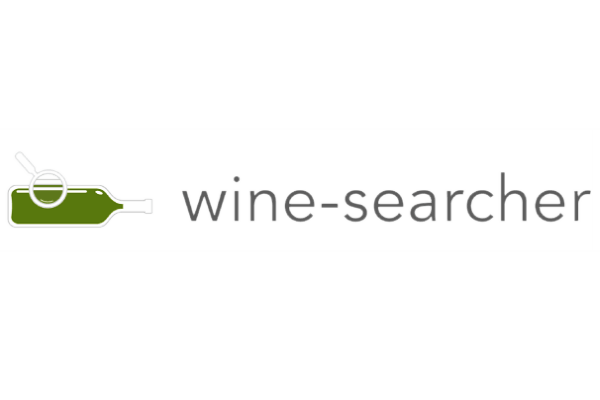
Source: https://www.wine-searcher.com/m/2024/04/us-consumers-turn-to-italian-wine
Gateway grapes and delicious discoveries lure in wine lovers new and old.
Italy has always been a land of discovery and fantasy – especially for Americans.
Around 16.8 million people in the US self-identify as Italian-American, according the Census Bureau, there are close to 50,000 Italian restaurants in the US, and Italy is in the top five countries that Americans pack their bags and go visit every year.
The heady blend of luxe languor (La Dolce Vita!), glitzy glam (Versace!) and sexed-up danger (the Godfather!) is the lifestyle crack that most everyone (even Italians!) want to smoke. So it’s no surprise that the US drinks more Italian wine than any other country – $1.8 billion worth last year alone.
But what are people drinking? The wines that Americans are putting in their carts – and why – might surprise you.
Before Drizly’s sad demise, it was one of the best measures of a wine grape or country’s success. Last year, four out of the five fastest-growing red wines on the platform were all Italian: Brunello di Montalcino was the top seller, then Corvina, Nerello Mascalese and Nerello Cappuccio respectively. (The German grape Dornfelder was ranked No. 4).
Brunello’s cross-category appeal
Brunello has been on a slow and steady upward climb in the US since the 1970s, and has opened the door for many other lesser-known Italian varieties.
“We started shipping our Brunello to the US in 1976, and we were among the first wineries to sell Brunello [there],” says Alessandro Bindocci, winemaker at Il Poggione in the Montalcino DOCG.
Last year, the winery reported depletions rose 66 percent, and distribution was up 44 percent year-on-year in the US, a fact that he attributes to a rise in estimation and several great vintages in a row.
“Last year was a challenging year overall, but Brunello is living a happy moment where it still sells despite the difficult time,” Bindocci says, adding that it appeals to both experience wine lovers and those who are newer to the space. “Brunello represents tradition among Italian wines, and younger wine collectors are discovering that it cannot only last for a long time, but be enjoyable early on. Also, it is not as expensive as other collectible wines.”
Charles Lazzara, CEO and founder of Volio Imports, which represents 50 wineries, 35 of which are Italian, agrees that Brunello is thriving, thanks in part to a serious effort on the part of winegrowers to improve quality.
“Producers are really stepping it up, and the overall increase in quality has made it easy for American wine lovers to find well-made Brunello,” Lazzara says.
Gaia Gaja, fifth generation of a winery that has become synonymous with high-end Italian wine, credits both Banfi and Biondi-Santi for providing the “historicity and reputation” of Brunello.
“Over the years, we have built a solid base of collectors who appreciate the Brunello offerings from Pieve Santa Restituta, including our flagship Brunello and single vineyards Rennina and Sugarville,” Gaja says, adding that the increased enthusiasm for Brunello is simply a response to changes on the ground.
“New, ambitious producers not only continue to create world-class wines, but are positioning the quality bar higher,” she explains, adding that they are also innovating and investing, instead of depending on the same results amid a changing climate and tastes. “We selected new rootstock that is more adaptable to heat and drought. We take extra care in regenerating the soil and boosting life in the vineyards; work towards keeping bunches protected and in shade as opposed to de-leafing; and pay the utmost attention to deciding the right picking time. And we pioneered the planting of Sangiovese on the highest altitude areas of the denomination.”
The allure of the hidden gem
Brunello’s quality, and the story behind it, often means that serves as a gateway grape for other lesser-known Italian varieties, Lazzara notes.
“There’s an increasing interest in indigenous varieties, and even burgeoning wine drinkers have a desire to explore after having some experience with Italian reds,” says Annie Edgerton, wine and spirits educator at Manhattan’s Flatiron Wines & Spirits. “More and more people are also looking for hidden gems in Italy, and are using larger regions and well-known grapes as a jumping off point.”
Searching for the wine equivalent of a special snowflake, or the elusive unicorn, younger wine lovers hunt and peck among the shelves for something distinct, wallet-friendly and Instagrammable.
“Brunello is really for someone who is looking for something elevated,” says David Weitzenhoffer, owner of Community Wine & Spirits in Manhattan. “We’ve seen an uptick in sales of Nerello because there are so many exciting things happening on Mount Etna with Nerello. There’s a good backstory, and it’s well-priced, which makes it more accessible. Corvina, we’ve found, is for people who really know a lot about Italian wine.”
Jonathan Kleeman, group beverage manager and executive head sommelier at Story Group, finds that Brunello sells itself, especially as other top-tier options – cough, Burgundy, cough – are increasingly out of reach to everyone except the upper echelon of the 1 percent.
Corvina, he sees, as an even lower-priced alternative to Brunello for younger wine lovers seeking novelty and “mineral-rich, terroir-driven profiles, which resonate with current consumer preferences”.
Lazzara notes that Nerello, while still being a bit of a hand-sell, ticks a lot of boxes for the current crop of young, exploring enophiles.
“Nerello is ideal for exploratory wine drinkers,” he says. “The flavor profile makes for fresh, elegant wines with structure. But they aren’t heavy or jammy. Wine lovers and younger drinkers are looking for balance, not just power. At Italian restaurants with knowledgeable staff, there’s a good chance they’ll journey into new categories like Nerello.”
Collector’s candy
Across the board, Italian wine is becoming increasingly attractive to experienced and neophyte collectors.
“In the collectable space, sales of Nerello, mostly from producers on Mount Etna, are way up,” says Dave Parker, CEO at Benchmark Wine Group. “It’s such a food-friendly and interesting varietal that wine drinkers from all generations seems to gravitating toward it.”
Marco Prete, co-founder and owner of the high-end wine import shop in Portland, Oregon’s Wines of Kings, says that he’s noted an ever-increasing interest premium wines based on Sangiovese, Corvina and Nerello.
“There has been consistent improvement in wine quality from the specific areas those grapes are associated with – Tuscany, Veneto and Sicily,” Prete says. “Plus, US collectors are looking beyond Napa Cabs and Bordeaux blends. We get a lot of feedback from customers on these wines.”
Prete also theorizes that a general love of all things Italian – and the surge in popularity of cocktails like the Negroni and the Spritz – may also be driving the trend.
“There’s a renewed focus on the country and the quality and authenticity of the products made there,” he says.
It’s no secret that the wine industry needs to create more on-ramps and interesting detours for experienced and newer enophiles. These grapes do all that and more.
To join the conversation, comment on our social media channels.

